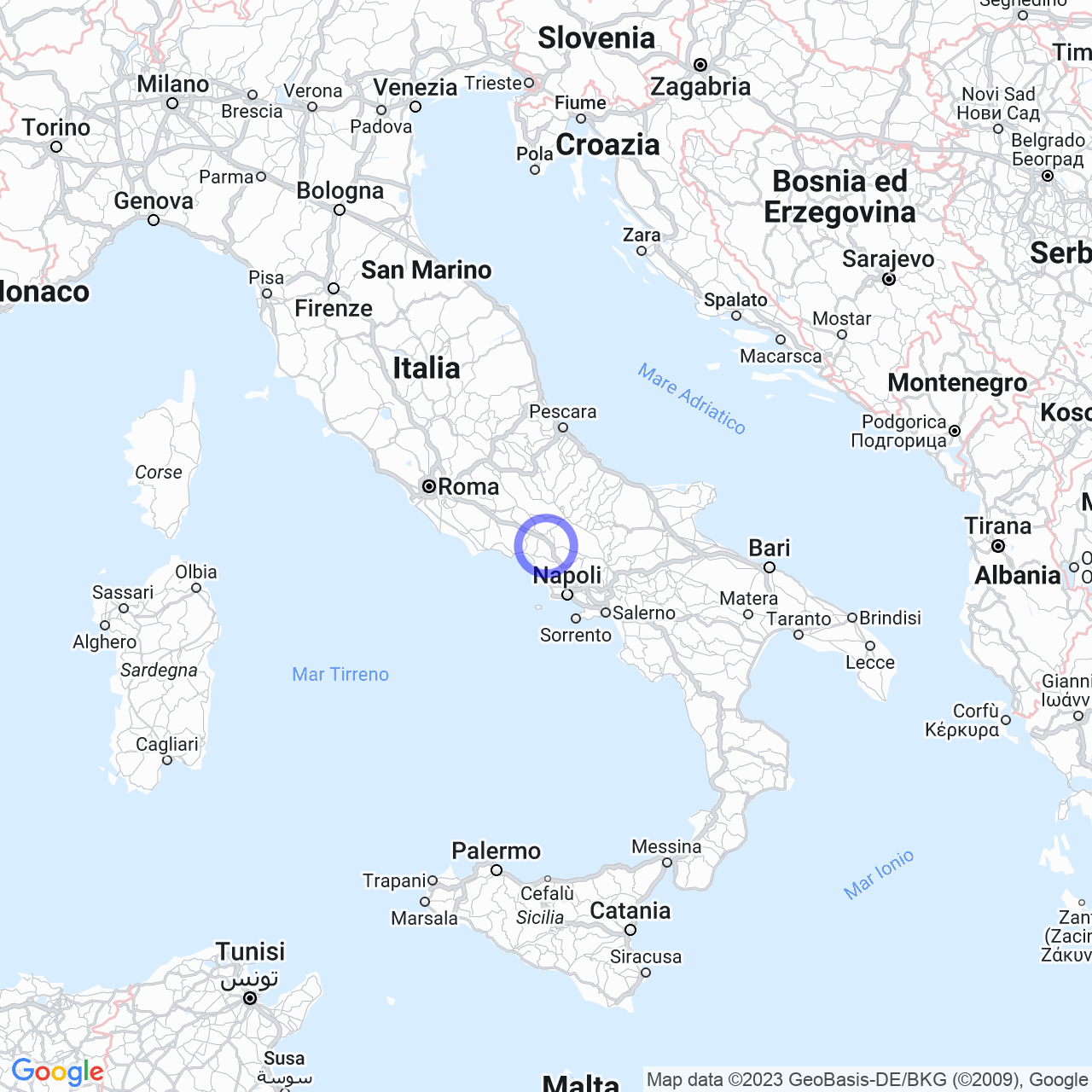Conca della Campania
Hi everyone! Today I want to talk to you about Conca della Campania, a town of 1159 inhabitants located in the province of Caserta, Campania. In this text, I will talk to you about the physical geography of this town, its unique climate, its history, and its monuments and places of interest.
Physical geography
Territory
Conca della Campania is located on the northeastern slope of the extinct volcano of Roccamonfina, on a hilly ridge carved by the Maltempo stream, a tributary of the Volturno, at an altitude of 420 meters.

Climate
Despite the coastline being only 22 km away, Conca della Campania does not receive the mitigating influence of the sea due to the relief of Roccamonfina, which is 1005 meters high. This makes the climate predominantly continental with very hot and humid summers, alternating with cold winters. Strong temperature fluctuations are recorded between day and night, sometimes up to 15°/17°C. Since there is no sea breeze, temperatures can reach 40°C. In winter, it is not uncommon for temperatures to drop to -8°/-10°C, especially in conditions of extreme cold. Precipitation is abundant, averaging 1100 mm per year. Thunderstorms are frequent in spring and summer. Snow falls once or twice a year, usually in large amounts, and can persist on the ground for several days. In March 1998, one meter of snow fell in less than 24 hours. The area is also subject, during the winter period, to impetuous tramontana gusts that exceed 100 km/h.
History
Nazi massacres
Unfortunately, during World War II, Conca and its fractions were the scene of the third Nazi massacre in terms of the number of victims in Campania after Acerra and Bellona. A total of 39 civilians were killed after an indiscriminate manhunt. The immediate, fierce reprisal was carried out by the infamous Herman Goering division stationed in nearby Roccamonfina following the killing of a German soldier that took place in the Orchi fraction at dawn on 1 November by the Italian officer Umberto Boaracchini who, disguised as a begging friar, was performing intelligence and exploration tasks for the United States Army, and two locals.
Honors
Monuments and places of interest
Now I want to talk to you about the monuments and places of interest of Conca della Campania. Here you can find the Castle, the Collegiate Church, and the Sanctuary.
The Castle, much restored, built around the 10th century A.D., is characterized by square towers, a Renaissance portal, the entrance hall, and a cycle of frescoes. Among the rooms currently preserved is the chapel, decorated with the images of Saints Vincenzo and Domenico. On the main altar, there is a statue of the Madonna della Libera in Lebanese cedar.
Another monument of interest is the Collegiate Church of San Pietro, dating back to the mid-15th century, mentioned in a bull of Pope Sixtus IV of 1474, which houses a valuable wooden triptych from the 16th century.
Finally, the Sanctuary of Santa Maria della Libera, which was merged with the Collegiate Church of San Pietro in 1843 with a bull of Bishop Ursino, along with all its income.
If you are passionate about architecture, I recommend a visit to Palazzo Galdieri Bartoli, built with architectural styles inspired by the Royal Palace of Caserta, in the center of Conca, which had about 400 rooms.
I hope I have intrigued you about this beautiful town in the province of Caserta. If you have the opportunity to visit it, you will not regret it!
